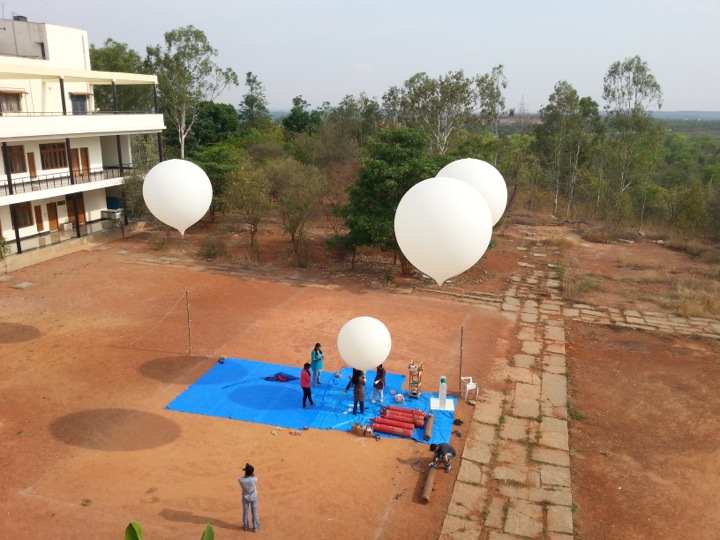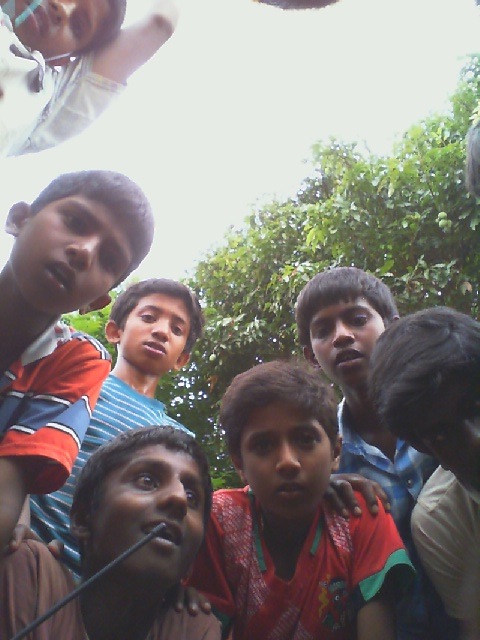We later found that the parachute did not open because the line to the balloons had fouled the parachute lines but, in a fortuitous combination of errors, one balloon had a leak and so did not burst and let the payload fall slowly enough that there was no damage.
Although the kids who found the payload pulled everything apart, nothing was damaged and they later telephoned us and returned everything safely. The scientific purpose of the experiment was to measure airglow lines but the spectrograph was saturated, presumably by bright clouds reflecting sunlight back into the entrance slit.
The image to the left shows the balloons filled at our CREST campus and ready to go and was taken from the roof of the building. The second image is from a USB camera mounted on the top of the payload to monitor the balloons and shows the children who picked up the balloon and the payload. We also had a camera pointed out the side which worked for about two hours until the payload overheated. It took one frame every 10 seconds which we have combined into a video.

